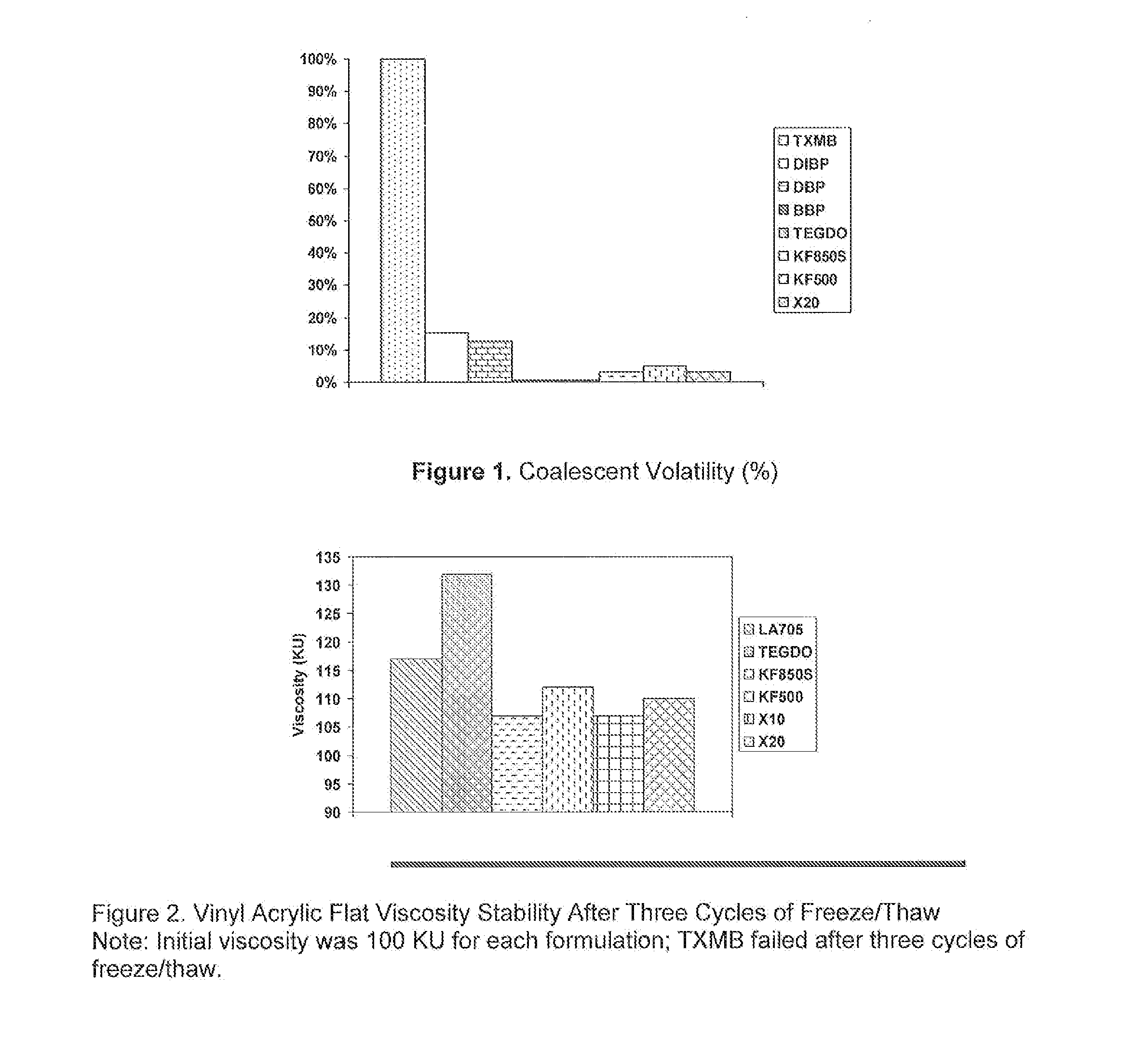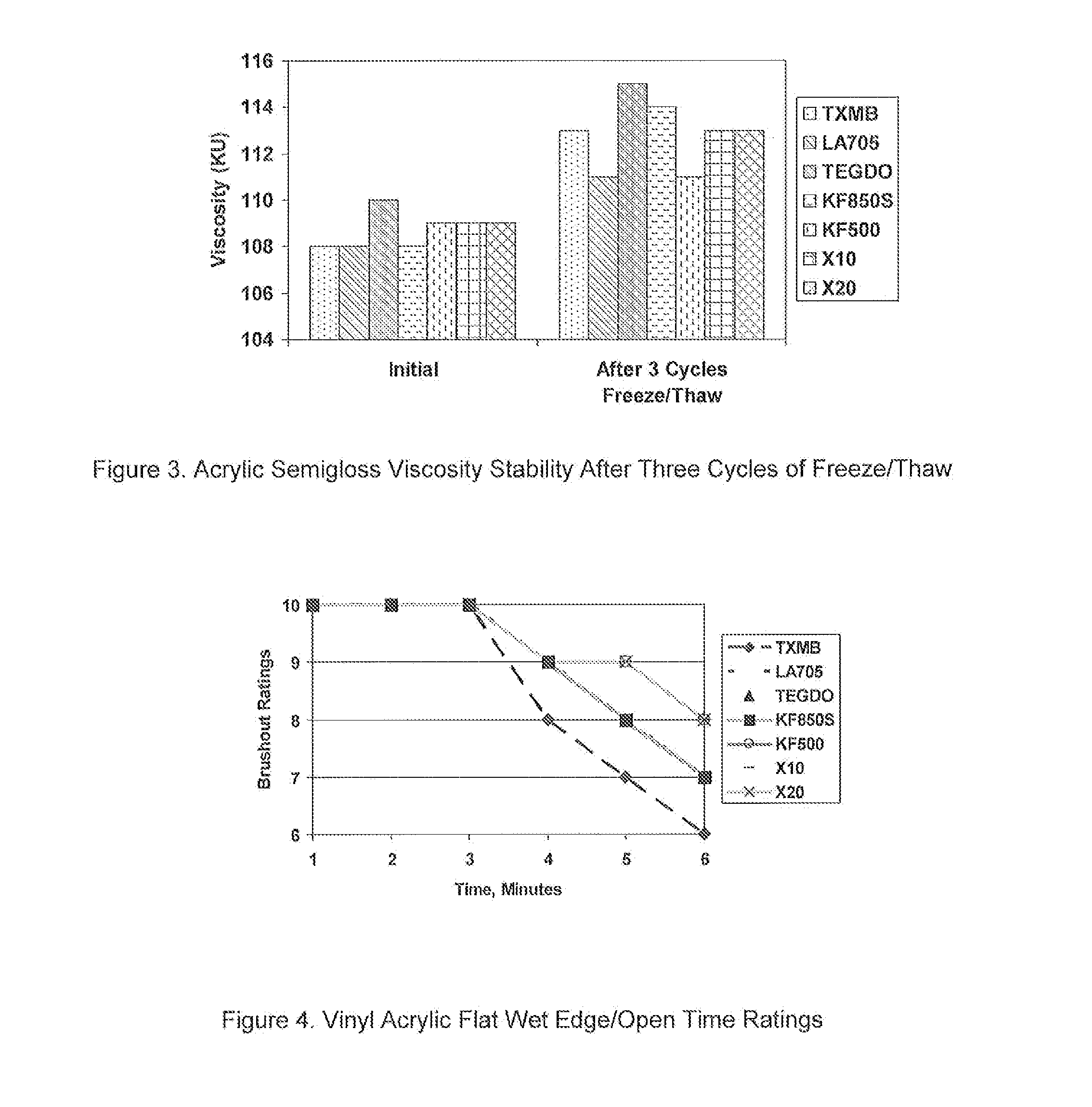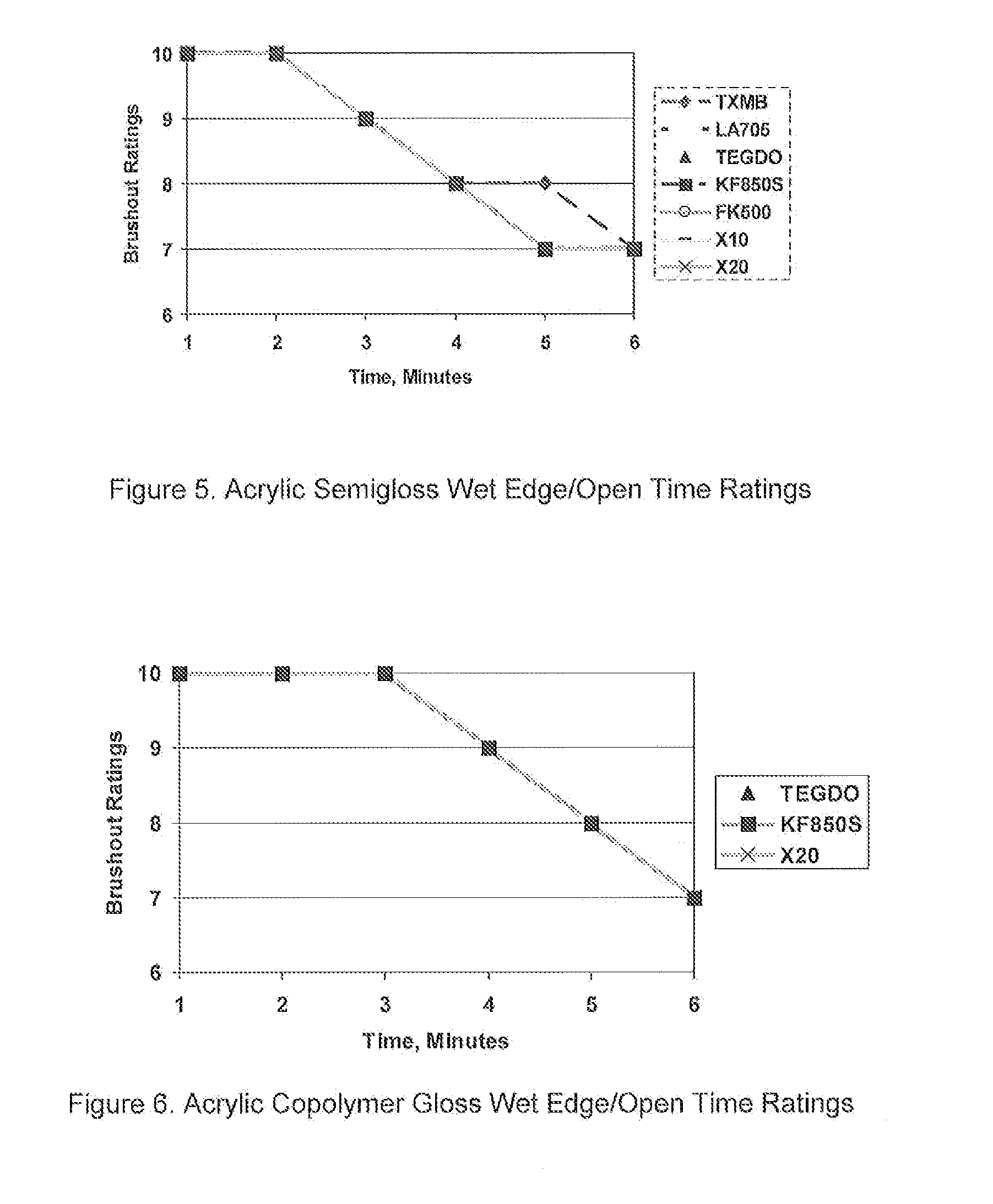Dibenzoate plasticizers/coalescent blends for low VOC coatings
a dibenzoate, coating technology, applied in the direction of non-macromolecular adhesive additives, inks, coatings, etc., can solve the problems of poor plant air quality, poor worker exposure to harmful chemicals, and achieve the effect of improving gloss and scrub resistance, improving scrub resistance, and improving scrub resistan
- Summary
- Abstract
- Description
- Claims
- Application Information
AI Technical Summary
Benefits of technology
Problems solved by technology
Method used
Image
Examples
example 1
Plasticizer / Coalescent Volatility
[0085]Although the amount of coalescent used in a gallon of paint is not enormous, minimizing every component contributing to VOC content is essential. Even a raw material generally used at a relativity low level can be altered to reduce VOC significantly. Oven tests are a standard method to compare VOC contribution of volatile and semi-volatile components. Oven tests as described above were conducted on the plasticizers / coalescents listed in Table 4 and DIBP, BBP, and DBP.
[0086]FIG. 1 illustrates the volatility of the coalescents based upon the results determined by the oven test. As seen in FIG. 1, the inventive formulation X20 had a comparable low volatility when compared to the blends of two dibenzoates (K-FLEX 850S (newer) and K-FLEX 500 (traditional), although the values for K-FLEX 500 were slightly higher. X20 also had a favorable volatility profile when compared to the newer, non-dibenzoate low VOC coalescent used as the primary control (TEGD...
example 2
Coalescent Efficiency
[0088]Prior to initiating the paint evaluation, the efficiency of each coalescent was determined in the base paint formulations described in Tables 1, 2 and 3 above. Determination of the efficiency of a coalescent is often done on the binary pair and determining the MFFT of the blend of coalescent and base emulsion. In this case, each coalescent's efficiency level was established by determining the amount of coalescent (in lbs.) required to obtain proper film formation at 40° F. (4° C.) in each of the paints / coatings described above. For this test, TXMB was used as the primary control for efficiency, since it is still considered a benchmark in this type of study. For the low VOC coalescents, the best comparison is TEGDO, a commercially available low VOC coalescent.
[0089]For 100 gallons, the flat paint required 6 pounds, the semigloss 3.5 pounds, and the glossy paint 38 pounds (in addition to the propylene glycol methyl ether present) of each coalescent for prope...
example 3
Wet and Drying Film Characteristics
[0090]Tables 6 through 8 reflect the performance data obtained for the wet paint or the dried paint using various coalescents as described above. As seen in the tables, the performance was similar for each paint, in all cases, including pH, initial viscosity (Stormer and ICI), heat stability, flow and leveling, mud cracking (flat only, RT and low temperature), touch up (RT and low temperature), color acceptance, spatter resistance, and low temperature film formation (over sealed and unsealed substrate). Most of these parameters are considered very important as the coalescent choice has the potential to detract from performance in all of these areas. For the harder acrylic copolymer gloss formulation (Table 8), data is only provided for KF850S, X20 and TEGDO.
TABLE 6Wet and Drying Paint Data for Acrylic Semigloss FormulationCoalescentTXMBKF850SLA705KF500X10X20TEGDOViscosity, ICI0.90.90.90.90.90.90.9Viscosity, KU108108108109109109110Heat Stability,2 W...
PUM
| Property | Measurement | Unit |
|---|---|---|
| width | aaaaa | aaaaa |
| width | aaaaa | aaaaa |
| total weight | aaaaa | aaaaa |
Abstract
Description
Claims
Application Information
 Login to View More
Login to View More - R&D
- Intellectual Property
- Life Sciences
- Materials
- Tech Scout
- Unparalleled Data Quality
- Higher Quality Content
- 60% Fewer Hallucinations
Browse by: Latest US Patents, China's latest patents, Technical Efficacy Thesaurus, Application Domain, Technology Topic, Popular Technical Reports.
© 2025 PatSnap. All rights reserved.Legal|Privacy policy|Modern Slavery Act Transparency Statement|Sitemap|About US| Contact US: help@patsnap.com



